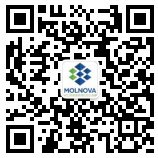PTEN
The study of PTEN began in 1997, when two groups independently searching for tumor suppressors on chromosome 10q23, a hot spot for loss of heterozygosity in many advanced-stage human tumors, identified a candidate tumor-suppressor gene that they named MMAC (mutated in multiple advanced cancers) or PTEN (phosphatase and tensin homolog deleted on chromosome 10). PTEN contains the invariant signature motif HCxxGxxR [commonly abbreviated C(x)5R], which is the hallmark of the PTPase superfamily. Human PTEN is a 403–amino acid protein that contains four functional domains: domain, a C2 domain, a carboxyl-terminal tail domain (C-tail), and a PDZ-binding domain (PDZ-BD) an N-terminal PI(4,5)P2-binding/phosphatase. PTEN opposes PI3K (phosphatidylinositol 3-kinase) activity. In response to extracellular signals, including hormones and growth factors, receptor tyrosine (Y) kinases are activated and undergo autophosphorylation.
Phosphorylated Y residues recruit the catalytic subunit of PI3K (p110) to the membrane via its interaction with the Src homology 2 (SH2) domains on its regulatory subunit (p85). PI3K converts phosphatidylinositol 4,5-bisphosphate [PI(4,5)P2] to phosphatidylinositol 3,4,5-trisphosphate [PI(3,4,5)P3]. The increased localized concentrations of PI(3,4,5)P3 recruit many pleckstrin homology domain–containing proteins, including AKT and its activating kinase, PDK, to the membrane. Activated AKT has many downstream effects, including promotion of cell proliferation, increase of cellular glycolytic flux, and inhibition of apoptosis. PTEN antagonizes this survival/proliferative paradigm by dephosphorylating PI(3,4,5)P3 and consequently decreasing AKT activity. PTEN is involved in multiple cellular processes associated with cell polarity and migration, growth and metabolism, cell-cycle progression and stem cell renewal, and cell architecture and environment.
References
1.Worby CA,et al. Annu Rev Biochem. 2014;83:641–669.
Phosphorylated Y residues recruit the catalytic subunit of PI3K (p110) to the membrane via its interaction with the Src homology 2 (SH2) domains on its regulatory subunit (p85). PI3K converts phosphatidylinositol 4,5-bisphosphate [PI(4,5)P2] to phosphatidylinositol 3,4,5-trisphosphate [PI(3,4,5)P3]. The increased localized concentrations of PI(3,4,5)P3 recruit many pleckstrin homology domain–containing proteins, including AKT and its activating kinase, PDK, to the membrane. Activated AKT has many downstream effects, including promotion of cell proliferation, increase of cellular glycolytic flux, and inhibition of apoptosis. PTEN antagonizes this survival/proliferative paradigm by dephosphorylating PI(3,4,5)P3 and consequently decreasing AKT activity. PTEN is involved in multiple cellular processes associated with cell polarity and migration, growth and metabolism, cell-cycle progression and stem cell renewal, and cell architecture and environment.
References
1.Worby CA,et al. Annu Rev Biochem. 2014;83:641–669.



 021-51111890
021-51111890 购物车()
购物车()
 sales@molnova.cn
sales@molnova.cn






